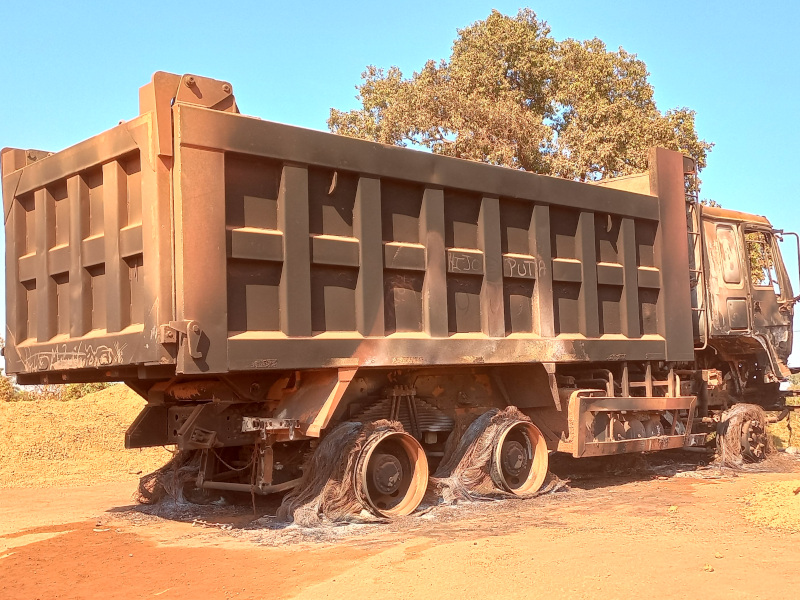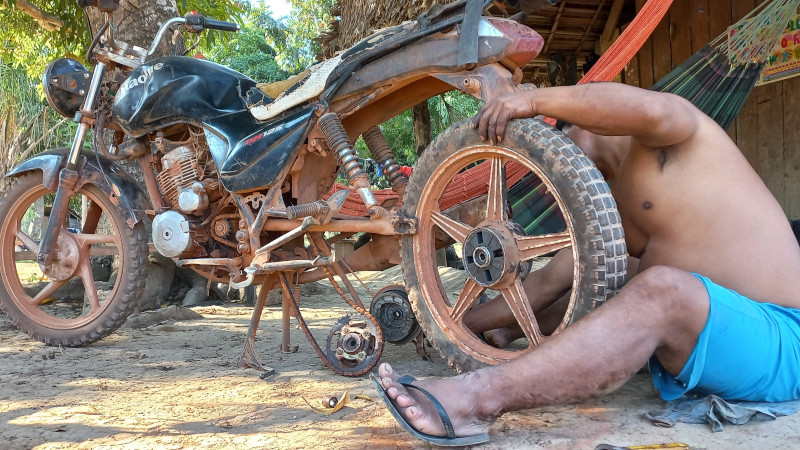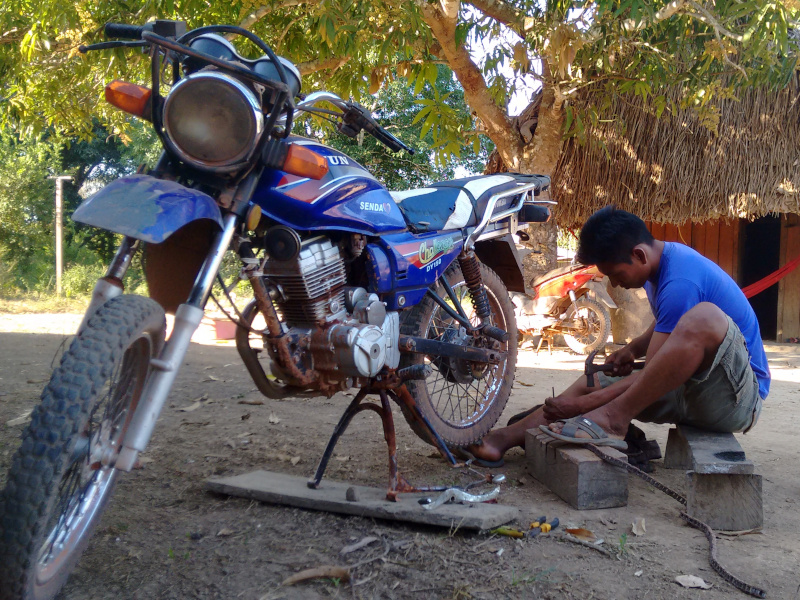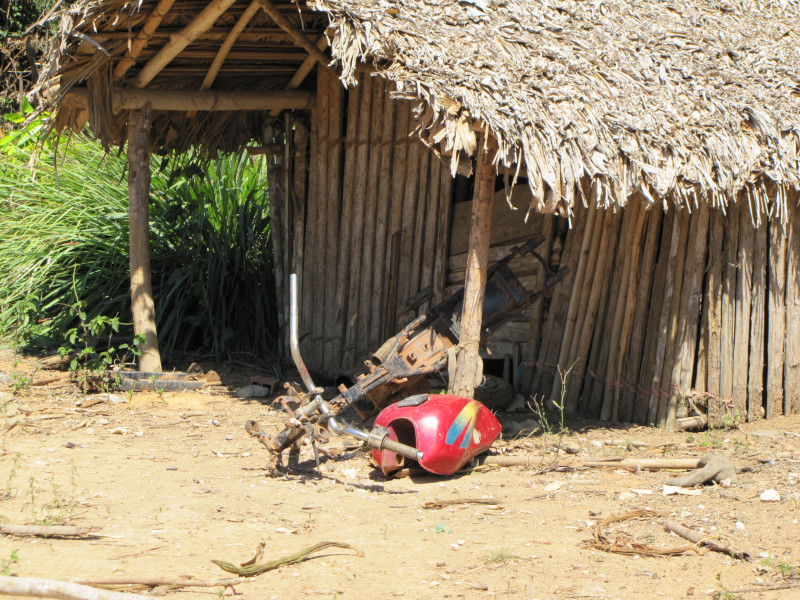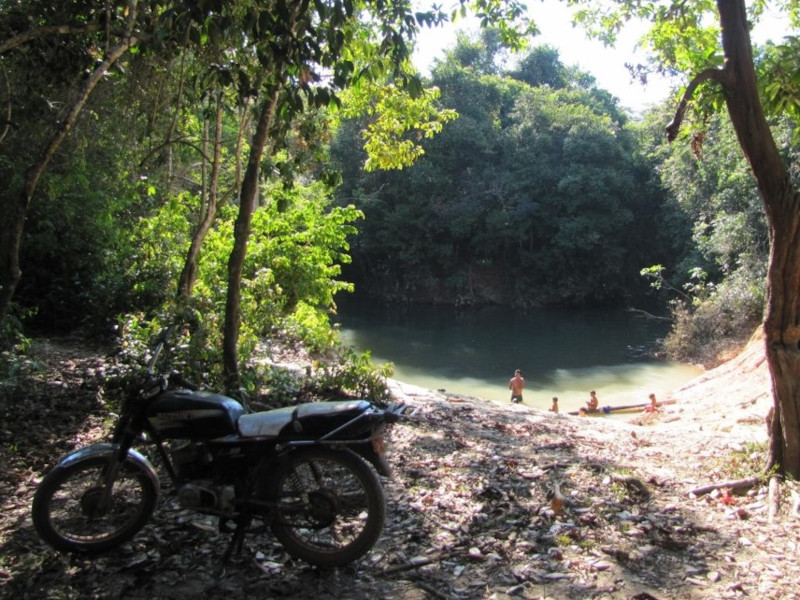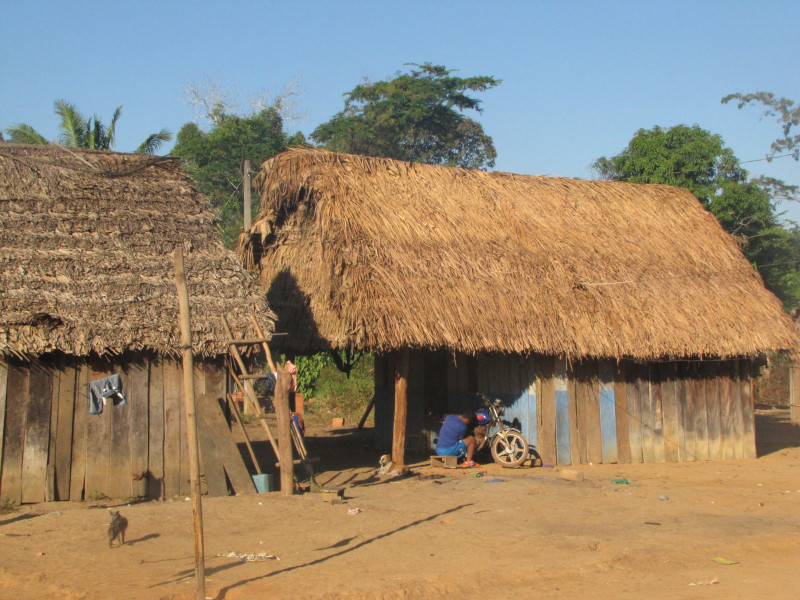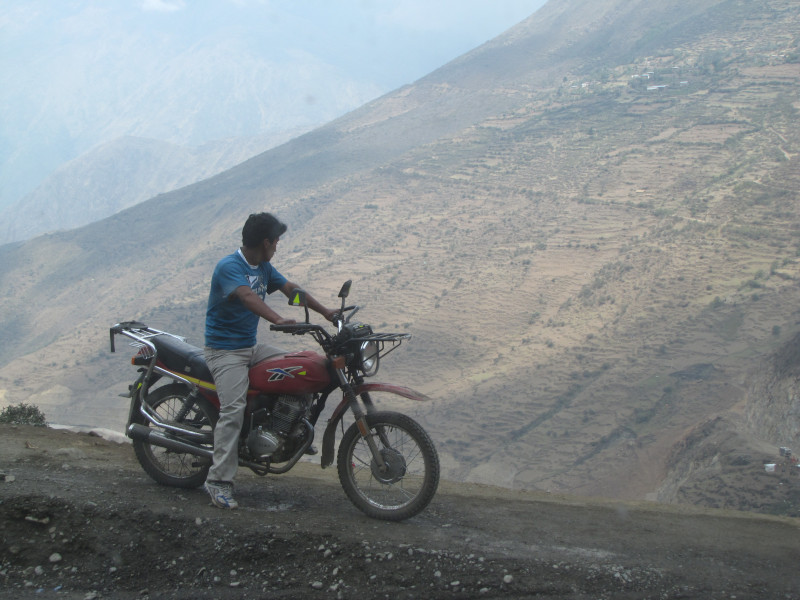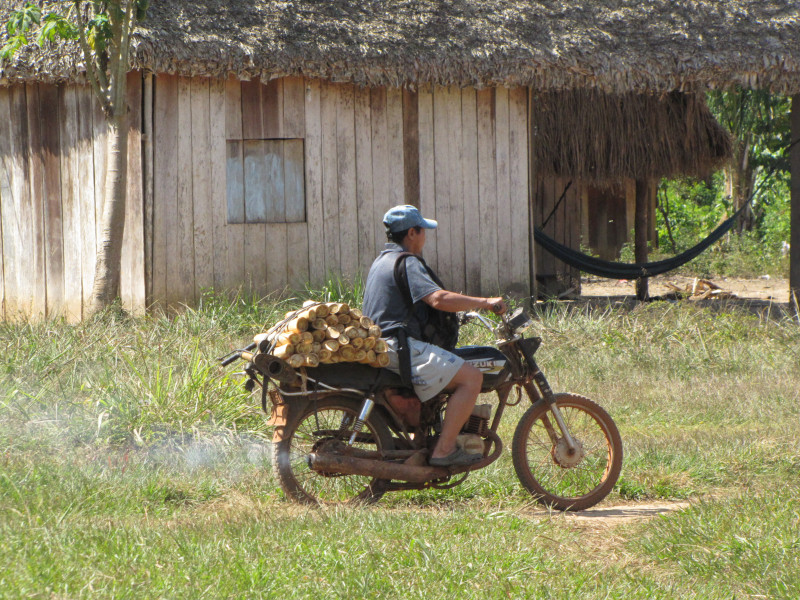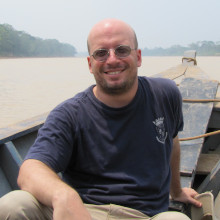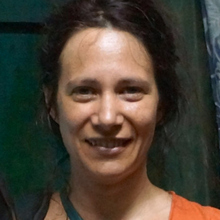MOTOBOOM
The Current Impact of Motorcycle Motorisation on Amazonian Indigenous Peoples
About
During the last century, the indigenous South American Lowlands have been colonized by steamboats, railways, trucks, chainsaws, fire-weapons and electric generators introduced by missionaries, extractive industries, armies, development projects, and NGOs. However, anthropological and historical research has largely neglected this mechanical colonisation of indigenous life by focusing on topics such as ideologies of personhood, kinship, cosmology, and relations with animals, religious missions and non-human spirits. Aiming at understanding social change, some studies have dealt with some of the new materialities that model everyday experience: t-shirts, outboard motors, solar panels, and cell phones.
Nevertheless, there are virtually no studies that analyse a conspicuous fact of the modernisation of these marginal territories: the current tide of motorcycles that during the last few decades altered dramatically the interethnic landscape, and its social, economic and environmental repercussions that reshape current indigenous reality. Therefore, the goal of the project is to develop a ground breaking and interdisciplinary analysis of the effects of motorcycle dissemination among the indigenous peoples of Bolivian Amazonia that fills a significant gap in anthropological studies regarding indigenous modernity, and to achieve practical impact regarding public policies on road safety and prevention of accidents in marginal contexts.
Research
During the last century, the indigenous lowlands of South America were colonised by steamships, railways, trucks, guns, chainsaws and electric generators introduced by missionaries, armies, extractive industries, development projects, and NGOs. This mechanical colonisation of indigenous life has been largely neglected by anthropological and historical research. Some studies have indeed analysed some of the new materialities that shape everyday indigenous experience (e.g., radios, outboard motors, solar panels, mobile phones), but hardly any research has dealt with the massive motorbike boom that over the last decades altered the inter-ethnic landscape of regions such as Bolivian Amazonia, and contributes to reshape contemporary indigenous reality.
Nowadays more and more indigenous persons, such as the Chacobo of Bolivian Amazonia with whom I conduct my fieldwork, own motorbikes that are purchased with the proceeds of one or two years of zafra (i.e., the traditional form of labour which consists of a trader advancing merchandise to the worker generating a debt that the latter must pay off with rubber, timber, chestnuts, palm hearts, etc.). The motorbike frenzy is not an exclusively indigenous fact, as it is actually shared with other ethnic groups and with the Créole population - thus, in the city of Riberalta, you can find the Monument to the motorbike. In this sense, motorcycle culture represents an icon of belonging: a way of publicly exercising citizenship and showing oneself to be a good Bolivian citizen. And yet, to attribute the contemporary fascination of indigenous peoples with motorcycles to mere consumerism, or in any case to a sort of by-product of the global expansion of capitalist or nationalist logic, seems to be a bit simplistic.
In the classic ethnographies of the early 20th century, the indigenous peoples of the South American lowlands spent hours decorating body ornaments, bows and arrows: now they spend most of their free time polishing, dismantling or reassembling motorcycles. What are the reasons behind this mechanical fetish? The motorcycle boom has an obvious impact on the landscape of communities, randomly littered with mechanic “ruins” or “fossils”: wheels, handlebars, fuel tanks, exhaust pipes, and so on. And it also has a more practical and much more urgent effect: road accidents involving motorbikes are nowadays a leading cause of death among indigenous peoples - and even more so since Chinese companies began paving the road that runs across their territory. In this novel scenario, the need for collective action in the face of road accidents (assemblies, road blockades, demands for legal compensation for the families of the dead and injured) is becoming an increasingly relevant issue for local communities and indigenous organisations. And, perhaps in a more abstract fashion, the growing death and injury rates due to mechanic accidents pose the question of conceiving novel notions of accidentality, causality and danger in high-risk and technologically underdeveloped scenarios: indigenous motorcycles, in fact, operate in a much more fluid space than the predictable circuit of road safety prevention, technical service and legal insurance that we sometimes take for granted.
At the same time, motorbikes transform the relation of indigenous peoples with space, nature and environment. While optimizing the productivity of hunting, fishing, horticulture and even wage labour, they help to manage the eventual adversities of the seasonal cycle while also impacting on an environment already pressed by urbanization, deforestation and extractive exploitation: soybean agriculture, intensive hunting, illegal timber, etc. Less evident, perhaps, are other issues that reveal the cultural nuances of mechanic appropriation: what is the biography, the life cycle or social life of the indigenous motorbike? Are there specific mechanisms of naming, sexualisation, tuning or subjectivation of machines? What is their relation with local criteria of ownership and property, or with the public display of individual charisma, political legitimacy, or masculinity? At first sight, for instance, motorcycles are associated with sexual division of labour, uxorilocality, and traditional gender roles (e.g., men, hunting, public, exterior versus women, horticulture, domestic, interior), and a significant link between motorcycles and the values and categories associated with masculinity seems indeed to be in order. However, motorcycles simultaneously induce dynamic rearrangements in ethnic, generational and gender identities by creating spaces of agency that might deconstruct established configurations of power: they may certainly be vectors of social inequality but they can also function as a potent source of gender equality and women’s empowerment. It is necessary then to analyse the paradoxical impact of indigenous motorcycles, which can be certainly interpreted as icons of dependence on capitalist economy, exploitation or social inequality, but also thought of as vector of social agency, gender disruption and emancipation from the tutelage of gender categories, missionaries, extractive industries, military agents, development projects, and NGOs.
Finally, the project will analyse the epistemology of motorcycle culture in an informal milieu that ignores the technical logic of branding, spare-parts, and legal coding. Is there an ‘ethnomechanics’ based on ‘cannibalization’, bricolage, and other emergent innovations? And does it constitute an indigenous or an inter-ethnic sociotechnical system? How does the intergenerational transmission of mechanic knowledge work? Are there formal analogies with other relevant operative chains and epistemological circuits (e.g., shamanism, mythical mnemonics, email, social networks, cell phones)? At the very least, these questions suggest that we need to contest the ethnocentric assumption that machines work in the same way everywhere, while providing fresh anthropological data that helps us to rethink the concrete impact of technology on indigenous reality, as well as the ongoing rearrangement of relations regarding technology, society and environment.
Team
Diego Villar
Marie Curie Fellow
Valentina Bonifacio
Supervisor
Secondment
The Secondment at IHEAL-CREDA will allow to acquire specific skills of digital conservation and management of anthropological data and virtual access to open-access archives, which is the axis of the current trajectory of the proposed supervisor: Dr. Nicolas Richard.
News and events
2024
2023
|
|
9-11 August 2023: "Jornadas Tierras Bajas" [ESP] | 2 MB |
|
|
May 2023: “Amazonia by Steam: Vicissitudes of a Geometric Revolution” | 1 MB |
- May 2023: “Do cavalo à moto: Por dentro do boom das motocicletas na América do Sul indígena” [POR]
- April 2023: “From horseback to motorbikes: inside the motorcycle boom in Indigenous South America”
- April 2023: “La región en clave global: el boom de la motocicleta en las comunidades indígenas”[ESP]
Related links
- MOTOBOOM - The Impact of the Current Dissemination of Motorcycles in Indigenous Lowland South America
- Nameless stories - The Invisible Women: Nameless and Forgotten Stories of the Rubber Boom (Bolivian Amazonia, 19-20th centuries)
- Interruptions - Accidents, malfunctions and downtime. Another view of extractive territories
- HITAL - Histoire transatlantique des Anthropologies d’Amérique Latine / International Research Network [FRA]
- CIHA - Centro de Investigaciones Históricas y Antropológicas [ESP]
- PEAC - Programa de Estudios Antropológicos Comparativos [ESP]
- CLAC - Coordinación Latinoamericana Ca’ Foscari

